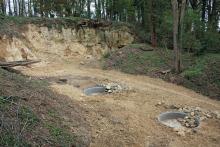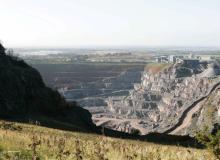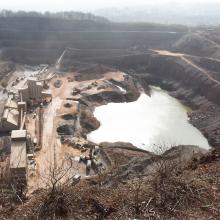The new RESTORE Project, incorporating partners from the UK, Netherlands, Belgium and Germany and funded by the European Regional Development Fund through the INTERREG IVB NWE Programme, has been offically set on its way at a launch event at the Institute of Materials, Minerals and Mining in London.
Representing the RSPB (
Such habitat creation will provide vital homes for all nature in line with the EU’s targets to halt biodiversity decline by 2020, while also helping local communities to re-connect with nature on sites appropriately restored for biodiversity.
Nigel Jackson, the Mineral Products Association’s (MPA) Chief Executive and
He highlighted the important contribution operators are already making towards biodiversity enhancement in the UK, as celebrated at the recent MPA Restoration and Biodiversity Awards, in association with
Earlier this year, a coalition of 25 leading conservation and research organisations reported a 60% decline in UK species in recent decades in the ground-breaking State of Nature Report. The minerals industry in the UK is already playing a key role in helping to reverse such a decline. For instance, 15 of the UK’s 100 pairs of elusive bitterns are to be found on mineral sites which have been restored for nature.
Nature After Minerals (NAM), the RSPB/Natural England partnership programme, has been working alongside stakeholders in the UK to shine a light on the work being undertaken to enhance biodiversity in and around the minerals industry.
It will continue to play a pivotal role within the RESTORE project, sharing best practice and disseminating advice on innovative ideas and methods being employed, internationally, through a series of demonstration events, in the not-too-distant future.
Such liaison and collaborative working is necessary as the pressures on the natural world continue to mount, despite some successes here and there: it needs a helping hand, as Carolyn Jewell, NAM programme manager, said at the event:
“The minerals industry in the UK is working hard to realise its potential to deliver for the natural world and provide vital homes for nature on its sites, whether during operational phase or post-restoration. But the stakes are high and nature is struggling to keep up in an increasingly-developing world.
“Nature After Minerals is looking forward to working with even more partners further afield, to share instances of great best practice in mineral site restoration, both here in the UK and on the near Continent. The appropriate and sustainable restoration of mineral sites, for biodiversity, can make a real difference to the state of the natural environment.
“Together, under the RESTORE Project , we can do even more for nature to help combat the worrying declines in species and habitats, while contributing to the economies of local communities in the North-West corner of Europe.”
For more information on the RESTORE Project, contact Bea Ayling, RESTORE Project co-ordinator at Email: %$Linker:








